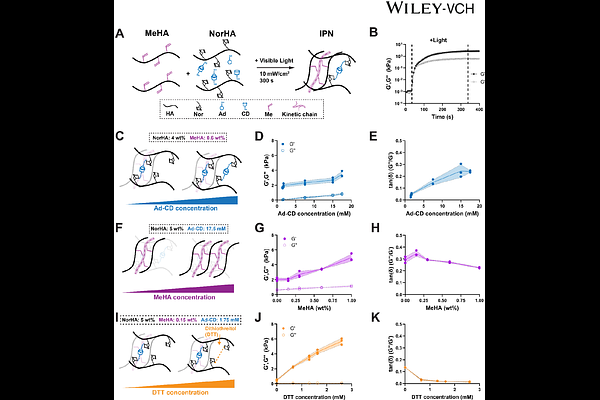Hydrogel viscoelasticity modulates cell nascent extracellular matrix deposition

Hydrogel viscoelasticity modulates cell nascent extracellular matrix deposition
Tan, M.; Plaster, E.; Roy, A.; Wolfenson, H.; Abraham, A.; Loebel, C.
AbstractPolymeric hydrogels are valuable platforms for determining how specific mechanical properties of native tissue extracellular matrix (ECM) regulate cell function. Recent research has focused on incorporating viscous and elastic properties into hydrogels to investigate cellular responses to time-dependent mechanical properties of the ECM. However, a critical aspect often overlooked is that cells continuously remodel their microenvironment in hydrogels, such as by the deposition of newly secreted (nascent) ECM. While this nascent ECM has been demonstrated to play a vital role in transmitting mechanical signals across various biological contexts, the mechanisms by which it regulates cellular function in response to time-dependent mechanical properties remain poorly understood. In this study, we developed an interpenetrating polymer network that enables independent control of viscous and elastic hydrogel properties. We show that cells cultured on high-viscosity hydrogels deposit increased nascent ECM which also correlates with enhanced hydrogel remodeling. Interestingly, higher nascent ECM deposition on high-viscosity hydrogels was decoupled from intracellular contractility. These results establish a relationship between hydrogel viscosity and nascent ECM deposition that may extend to diverse cell types and offer new insights into cell-hydrogel interactions.